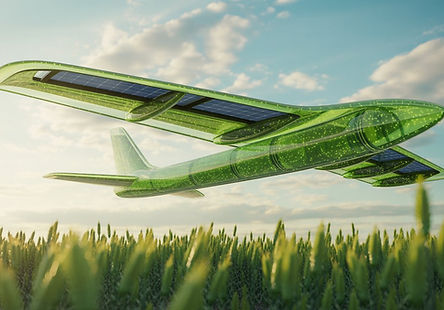Blogs
Vidhisha Mulye
E20 Fuels in India: Transition to Cleaner Mobility
What happens when you add a new flavour to a familiar recipe, one that makes it healthier yet keeps its essence intact? Switching India’s fuel to E20 is a bit like blending tradition with innovation.
India’s transport sector is heavily dependent on fossil fuels, with nearly 85 percent of crude oil being imported to meet domestic demand. This creates significant economic vulnerability and adds to the country’s carbon emissions.
Dhairya Gandhi
Self-Healing Lubricants: From Lab Innovation to India’s Industrial Future
Imagine a world where your car engine, a steel plant conveyor, or a wind turbine gearbox could repair its own wear while running—just like human skin heals a cut. This is no longer just science fiction. Researchers are developing self-healing lubricants, powered by nano-additives, that can detect surface damage, repair it at the microscopic level, and extend machine life dramatically.
SAI RAVI TEJA CHITTAJALLU
Pigments of the Future: Where AI Meets Nature in Color Creation
India’s relationship with pigments is ancient and colorful. From natural indigo dye in the Indus Valley Civilization to vivid reds made from madder roots, Indian artisans mastered the art of extracting and mixing natural colors centuries ago. Temples, textiles, and miniature paintings still echo this legacy, proving that sustainable color isn’t a new idea—but something we’re rediscovering in modern ways.
Dhairya Gandhi
Synthetic Fuels and India: A Low-Carbon Leap Forward
Synthetic fuels, also known as synfuels, are liquid fuels made from non-petroleum feedstocks like biomass, coal, methane, syngas (a mixture of CO and H₂), or even collected CO₂ by procedures like hydrogenation, methanol synthesis, and Fischer–Tropsch. They can simulate conventional gasoline, diesel, and jet fuel and are essential for decarbonizing industries that are difficult to electrify, such as shipping and aviation.
Dhairya Gandhi
Flying Towards a Greener Future: India's Sustainable Aviation Fuels Journey
India's aviation sector is rapidly expanding, ranking as the world's third-largest market. This growth, however, comes with a significant environmental cost, as aviation, if considered a country, would be among the top 10 greenhouse gas (GHG) emitting nations globally. GHG emissions from India's aviation sector significantly increased between 2005 and 2018, with projections indicating a substantial surge by 2050. Decarbonizing this sector is crucial for India to achieve its 2070 net-zero target.
Dhairya Gandhi
India’s Biomass Energy: Powering a Sustainable and Rural Future
India’s expansive agricultural sector produces not just food, but also a substantial amount of organic residue—crop stalks, bagasse, cattle dung, urban waste—making biomass a uniquely local and sustainable energy resource. As the nation moves toward its goal of 500 GW of non‑fossil capacity by 2030 and aims for net zero by 2070, biomass energy is gaining prominence. In April 2025, India’s installed biomass capacity reached 11.58 GW, a blend of bagasse cogeneration, agricultural‑residue plants, and waste‑to‑energy systems . This sector continues to grow through a combination of technology improvements, supportive policy, and social benefits.
Dhairya Gandhi
The Exciting Evolution of Engine Oil: Paving the Way for New Fuel Technologies
The automotive world is undergoing a thrilling transformation, driven by the quest for cleaner and more sustainable energy. As we embrace alternative fuels like ethanol, compressed natural gas (CNG), and hydrogen, engine oil is not just adapting; it is evolving into a sophisticated partner that enhances engine performance and longevity in this new era. This journey is about innovation, pushing the boundaries of lubrication science to support a greener future.
Dhairya Gandhi
How EVs are reshaping lubricants
The Indian automotive industry is undergoing a transformative shift, and electric vehicles (EVs) are at the forefront of this evolution. While much of the focus remains on the electrification of transport, there is a parallel and equally significant impact unfolding in the lubricants market. As EVs steadily replace internal combustion engine (ICE)vehicles, the demand for traditional engine oils is poised for disruption.
Dhairya Gandhi
Reimagining India’s Used Oil Economy: How the EPR Framework Is Driving Circularity
India generates over 1.3 million tones of used lubricating oil annually, with less than 15% formally recycled. Most is mismanaged, posing environmental and health risks. The EPR framework, effective April 1, 2024, is a key step toward sustainable waste management.












